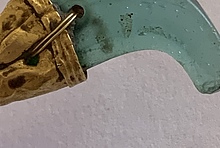Home PageAbout MindatThe Mindat ManualHistory of MindatCopyright StatusWho We AreContact UsAdvertise on Mindat
Donate to MindatCorporate SponsorshipSponsor a PageSponsored PagesMindat AdvertisersAdvertise on Mindat
Learning CenterWhat is a mineral?The most common minerals on earthInformation for EducatorsMindat ArticlesThe ElementsThe Rock H. Currier Digital LibraryGeologic Time
Minerals by PropertiesMinerals by ChemistryAdvanced Locality SearchRandom MineralRandom LocalitySearch by minIDLocalities Near MeSearch ArticlesSearch GlossaryMore Search Options
The Mindat ManualAdd a New PhotoRate PhotosLocality Edit ReportCoordinate Completion ReportAdd Glossary Item
Mining CompaniesStatisticsUsersMineral MuseumsClubs & OrganizationsMineral Shows & EventsThe Mindat DirectoryDevice SettingsThe Mineral Quiz
Photo SearchPhoto GalleriesSearch by ColorNew Photos TodayNew Photos YesterdayMembers' Photo GalleriesPast Photo of the Day GalleryPhotography
╳Discussions
💬 Home🔎 Search📅 LatestGroups
EducationOpen discussion area.Fakes & FraudsOpen discussion area.Field CollectingOpen discussion area.FossilsOpen discussion area.Gems and GemologyOpen discussion area.GeneralOpen discussion area.How to ContributeOpen discussion area.Identity HelpOpen discussion area.Improving Mindat.orgOpen discussion area.LocalitiesOpen discussion area.Lost and Stolen SpecimensOpen discussion area.MarketplaceOpen discussion area.MeteoritesOpen discussion area.Mindat ProductsOpen discussion area.Mineral ExchangesOpen discussion area.Mineral PhotographyOpen discussion area.Mineral ShowsOpen discussion area.Mineralogical ClassificationOpen discussion area.Mineralogy CourseOpen discussion area.MineralsOpen discussion area.Minerals and MuseumsOpen discussion area.PhotosOpen discussion area.Techniques for CollectorsOpen discussion area.The Rock H. Currier Digital LibraryOpen discussion area.UV MineralsOpen discussion area.Recent Images in Discussions
Mineralogical ClassificationCrystal structure of bøgvadite
29th Jul 2014 13:29 UTCUwe Kolitsch Manager
The crystal structure of bøgvadite, Na2SrBa2Al4F20, has been solved and refined to a R1 factor of 4.4 % from single-crystal data (MoKα X-ray diffraction, CCD area detector) on a sample from the cryolite deposit at Ivittuut, SW Greenland. Bøgvadite is monoclinic, P21/n space group, with unit cell parameters a = 7.134(1), b = 19.996(3) and c = 5.3440(8) Å, β = 90.02(1)o. A close proximity of the crystal structure to an orthorhombic symmetry and the presence of the two twin components in a nearly 1:1 ratio suggest that the investigated bøgvadite crystal has originally formed as a high-temperature orthorhombic polymorph which on cooling transformed to the stable low temperature monoclinic structure. The bøgvadite crystal structure has groupings of cation-fluoride coordination polyhedra similar to those found in the crystal structures of the genetically closely associated minerals jarlite and jørgensenite. However, its structure type is different from the latter two. The fluoridoaluminate framework of bøgvadite consists of infinite zig-zag chains of cis-connected AlF6 coordination octahedra. The 1 ∞ chains are interconnected by infinite chains of Na-F coordination polyhedra which extend in the same direction. Na is coordinated by nine F atoms if its full surrounding is taken in consideration, but makes significant chemical bonds only to closest five. The chains of AlF6 and NaF9 coordination polyhedra form double layers. In the centre of layers, relatively large voids in the form of pentagonal antiprisms are occupied by Sr atoms which make chemical bonds with the closest six F atoms. Between the SrF10 coordinations in the centre of layers run empty channels. The double layers are interconnected by Ba atoms which are coordinated by eight F atoms and fill the spaces between the layers. Bøgvadite belongs to the group of fluoridoaluminates with infinite chains of cis-connected AlF6 coordination octahedra, alike those found in the crystal structures of Ba-fluoridoaluminates.




Mindat.org is an outreach project of the Hudson Institute of Mineralogy, a 501(c)(3) not-for-profit organization.
Copyright © mindat.org and the Hudson Institute of Mineralogy 1993-2024, except where stated. Most political location boundaries are © OpenStreetMap contributors. Mindat.org relies on the contributions of thousands of members and supporters. Founded in 2000 by Jolyon Ralph.
Privacy Policy - Terms & Conditions - Contact Us / DMCA issues - Report a bug/vulnerability Current server date and time: May 14, 2024 01:33:37
Copyright © mindat.org and the Hudson Institute of Mineralogy 1993-2024, except where stated. Most political location boundaries are © OpenStreetMap contributors. Mindat.org relies on the contributions of thousands of members and supporters. Founded in 2000 by Jolyon Ralph.
Privacy Policy - Terms & Conditions - Contact Us / DMCA issues - Report a bug/vulnerability Current server date and time: May 14, 2024 01:33:37











